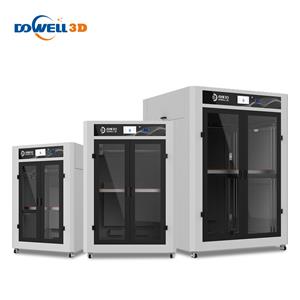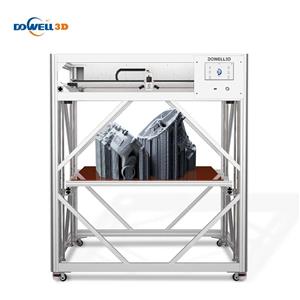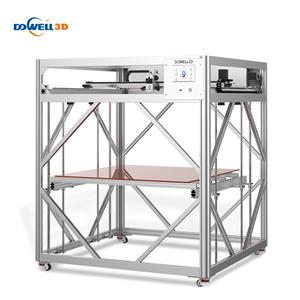Common mistakes in FDM large 3D printing model design
Common mistake 1: Ignore the design guidelines for different materials
Each printing material is different. These materials may be fragile or strong, soft or hard, smooth or rough, heavy or light. Therefore, it is necessary to design the printed objects according to specific materials. For example, if you know that you want to print a 3D printed object of ceramic material, there will be corresponding design recommendations (such as supporting suspended structures), strengthening the protruding parts, smoothing the corners and so on.
Common mistake two: Ignore printing technology
The basic chemical properties of printing materials are different, and the technology used to print these materials may also be different.
The best example is in the connection part: ABS, nylon, aluminum, or rubber materials can be used to print the connection part, but gold, silver, copper or resin cannot. The reason for not being able to print the connected part is not the material itself, but the printing technology that handles these materials.
To print ABS materials, we use Fused Deposition Molding (FDM); to print nylon, aluminum, and rubber materials, we should use selective laser sintering (SLS); to print precious metals, we can use lost wax casting (using wax to make molds, The external molding material becomes the integral mold); the resin material printing uses light curing technology (Stereolithography).
You may sound confusing, but we must remember one thing: stainless steel and silver cannot be considered to have the same printing requirements because they are both metals. They use different printing technologies, and some practices are different in design. On the contrary, the design requirements for materials such as gold, silver, copper, and brass (using the lost wax casting method) may be relatively similar.
Common mistake three: Ignore wall thickness of large 3d printer printing
Some problems with wall thickness are one of the most common reasons for the failure of many 3D printing models. If the wall thickness is too thin, individual small parts of the model will be difficult to print, and will be very fragile when printed; if the wall thickness is too thick, the internal stress generated will be too large, and the printed object will easily crack or even break under this pressure.
Common mistake 4: Ignore the file resolution size
Understand the design guide? Are you sure about the materials to be used? No problem with wall thickness? Great, next we have to pay attention to the issue of file resolution.
The most common file format currently used in 3D printing is the STL format (standard triangle language, standardized three-dimensional language), and the design is transformed into a three-dimensional model in a three-dimensional space. Most 3D modeling software sets the option of converting the original design into STL format files. The following are the visual effects presented by different resolution files: from left to right, the highest resolution-lowest resolution.





